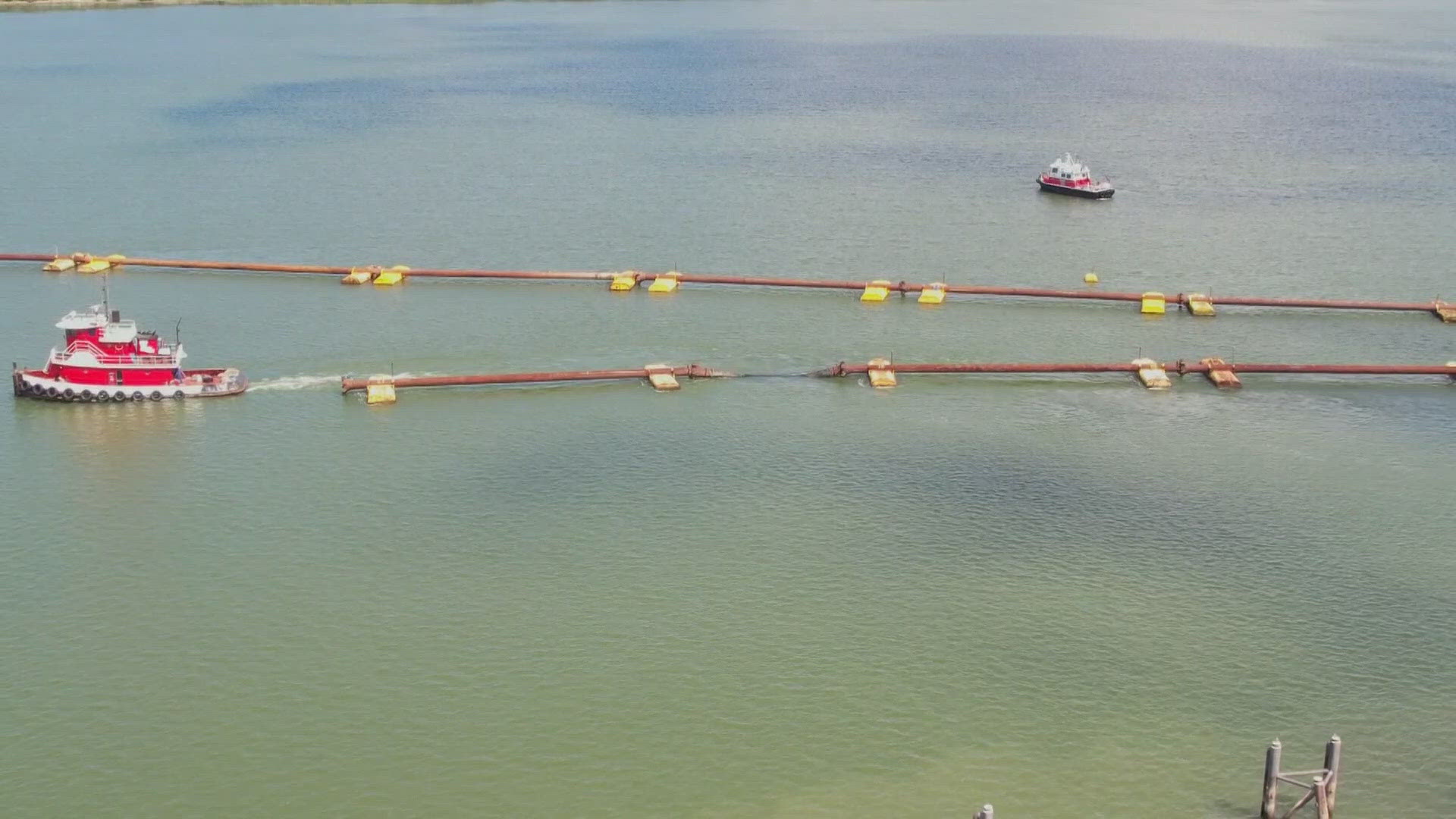BELLE CHASSE, La. — Saltwater from the Gulf of Mexico has reached some drinking water intakes in Plaquemines Parish. The same problem caused a monthslong emergency late last year, but this time around, Parish leadership says the water is still safe to drink and should remain that way for the foreseeable future.
“Beginning of this week, and even last week, we had started talking about it,” said Plaquemines Parish President Keith Hinckley. He told WWL Louisiana that salt concentration readings in the parish’s lowermost water intakes “went from 45 [parts per million] to 75, 80 in the last couple of days.”
That is still well below 250 parts per million, which is the level the federal government considers potentially harmful. But the Parish paid attention. “We still have to really focus on it and be aware that the elevations could rise pretty quick,” said Hinckley.
Saltwater intrusion happens when the Mississippi River level is low. With less water flowing downriver, there is not enough pressure to keep saltwater from the Gulf of Mexico out. Since saltwater is more dense than freshwater, it forms a wedge shape as it moves upriver, hence the term “saltwater wedge.”
It happens regularly, especially in the summer when rainfall in the Upper Mississippi River Basin is at its lowest. It can sometimes be severe, though. Last year, the “toe” of the wedge traveled about 70 miles upriver. The saltwater inundated drinking water intakes in lower Plaquemines Parish and made the tap water too salty to drink.
Right now, the “toe” has reached approximately mile marker 22 near Triumph. Matt Roe, Public Affairs Specialist for the Army Corps of Engineers New Orleans Division, said that is not far enough to construct an underwater sill like engineers did last year.
“We'd been dealing with saltwater intrusion since mid-to-late June, and had already constructed the sill early July,” he said. For now, engineers are only measuring the location of the saltwater wedge and communicating with Plaquemines Parish leaders.
Hinckley said even if the saltwater were to get as high as last year, the Parish is more prepared than last year. It has already worked out plans with parishes farther upriver to pump freshwater down if needed and reverse osmosis filters, which were installed during last year’s emergency, are still available.
“We're prepared, so the effects that we had last year, that's not going to happen this year, we feel comfortable and confident in that,” he said.
People can track the “toe” of the saltwater wedge on the Army Corps of Engineer’s dashboard here.

